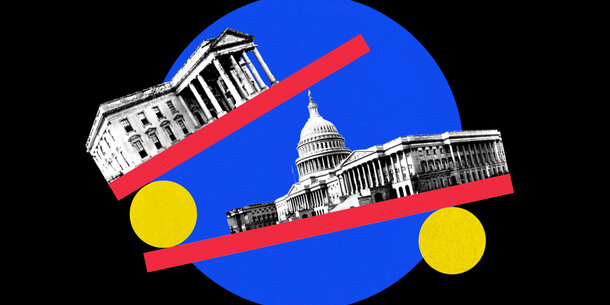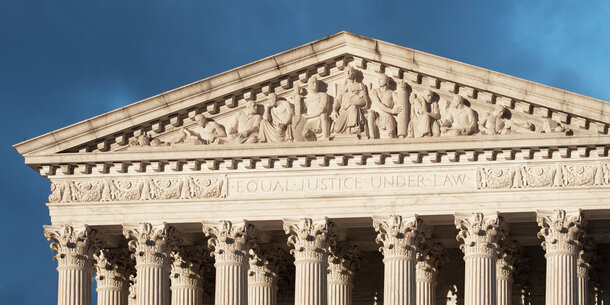You’re reading The Briefing, Michael Waldman’s weekly newsletter. Click here to receive it every week in your inbox.
Sometimes the big news from the Supreme Court comes not when the justices rule on a case, but when they decide to take it in the first place. That happened yesterday in a case with big implications for the role of government in American life.
And there’s a family drama at play, too. I write about that twist in my upcoming book, The Supermajority: How the Supreme Court Divided America. More about that below.
First the news: the justices agreed to hear Loper Bright Enterprises v. Raimondo. It’s an arcane case about who pays to monitor whether fishing boats are following federal fishery plans. As I said, arcane. But the Court announced it would consider one topic and one topic only in hearing the appeal: Should it overturn Chevron v. Natural Resources Defense Council?
Those who care about the environment, worker safety, and fair markets should feel a chill. This right-wing supermajority has already shown that it is eager to heed the demand of financial interests that did so much to install its members on the Court: find a way to curb the power of regulatory agencies.
The 1984 ruling in Chevron held that when an expert regulatory agency interprets an ambiguous law reasonably, the courts will not second-guess. It is among the most cited cases in federal courts. Over many decades, it has allowed government to function, while taking seriously notions of judicial restraint. After all, the engineers and economists and scientists of the Food and Drug Administration or the Environmental Protection Agency or the Securities and Exchange Commission . . . or for that matter, the fisheries agency! . . . must be capable of acting within the parameters set by Congress without an ideologically nosy judge jumping in. Chevron was a favorite of Justice Antonin Scalia. He thought it reflected the proper role for government — and for unelected justices and judges.
But major industries and the think tanks and lobby groups they back have chafed at this for years. They want to find a way to curb the regulatory state. In the early 20th century, the Supreme Court worked hard to block government from protecting workers, women, children, and public safety. Things came to a head in 1937 when President Franklin D. Roosevelt proposed to expand the Court and add new liberal justices. That was the huge “court-packing” fight we hear about often today. Roosevelt lost the battle but won the war: the Court retreated and stopped trying to stop government from acting.
Many libertarians and conservatives have said that was a big mistake. They pine for a “Constitution in exile.” For decades, they tried one theory after another to strike down the regulatory state. That regulations were a “taking” under the Fifth Amendment. That Congress could not “delegate” power to agencies. None of their bids really worked. And yet for a long time, deregulation advocates continued to pelt the Court with briefs urging the justices to undo Chevron.
A ruling last year began to hem in the regulators. The Court unveiled a new “major questions” doctrine in West Virginia v. EPA, the big climate change case from last June. The justices ruled that agencies could not act on a “major question” even if a congressionally enacted statute seems to authorize the agency’s action. What that means is vague. But we are already seeing lower court judges using the new doctrine to undo rules they just don’t like. “Major” may mean “if a judge with a lifetime appointment and the Federalist Society on speed dial doesn’t like it.”
All of which brings us to the family drama. Justice Neil Gorsuch, the brainy and brusque conservative, has sought limits on regulation and has previously urged the Court to reconsider Chevron.
The original Chevron case came in an era when the EPA itself was consumed with scandal and drama. Its administrator was Anne Gorsuch, a polarizing political celebrity and a charismatic former Colorado state legislator who was the Reagan administration’s second-highest-ranking woman. The Rocky Mountain News wrote admiringly, “She could kick a bear to death with her bare feet.” In fact, an earlier version of the case was called NRDC v. Gorsuch. She was an ardent foe of strong environmental regulation, slashing the agency staff and filling key posts with polluters. Congress held her in contempt for refusing to hand over documents about a corruption-tinged toxic waste program. She resigned. In her memoir, she records the reaction of her teenage son Neil. “You raised me not to be a quitter. Why are you a quitter?” he demanded. “He was really upset,” she added.
Now Neil Gorsuch has lifetime tenure and an opportunity to finish what his mother started. In the Court’s first term with Gorsuch on the bench, the justices made major rulings on abortion and guns as well as the interests of the fossil fuel industry (in West Virginia v. EPA). Then in its second term, it focused on race, voting, and democracy.
By taking Loper Bright, the Court has signaled it will be back to business — quite literally. In this case perhaps, and others for sure, we can expect the supermajority of conservative justices to push back against government environmental, safety, and other protections. Big money is at stake. So, perhaps, is family honor.



